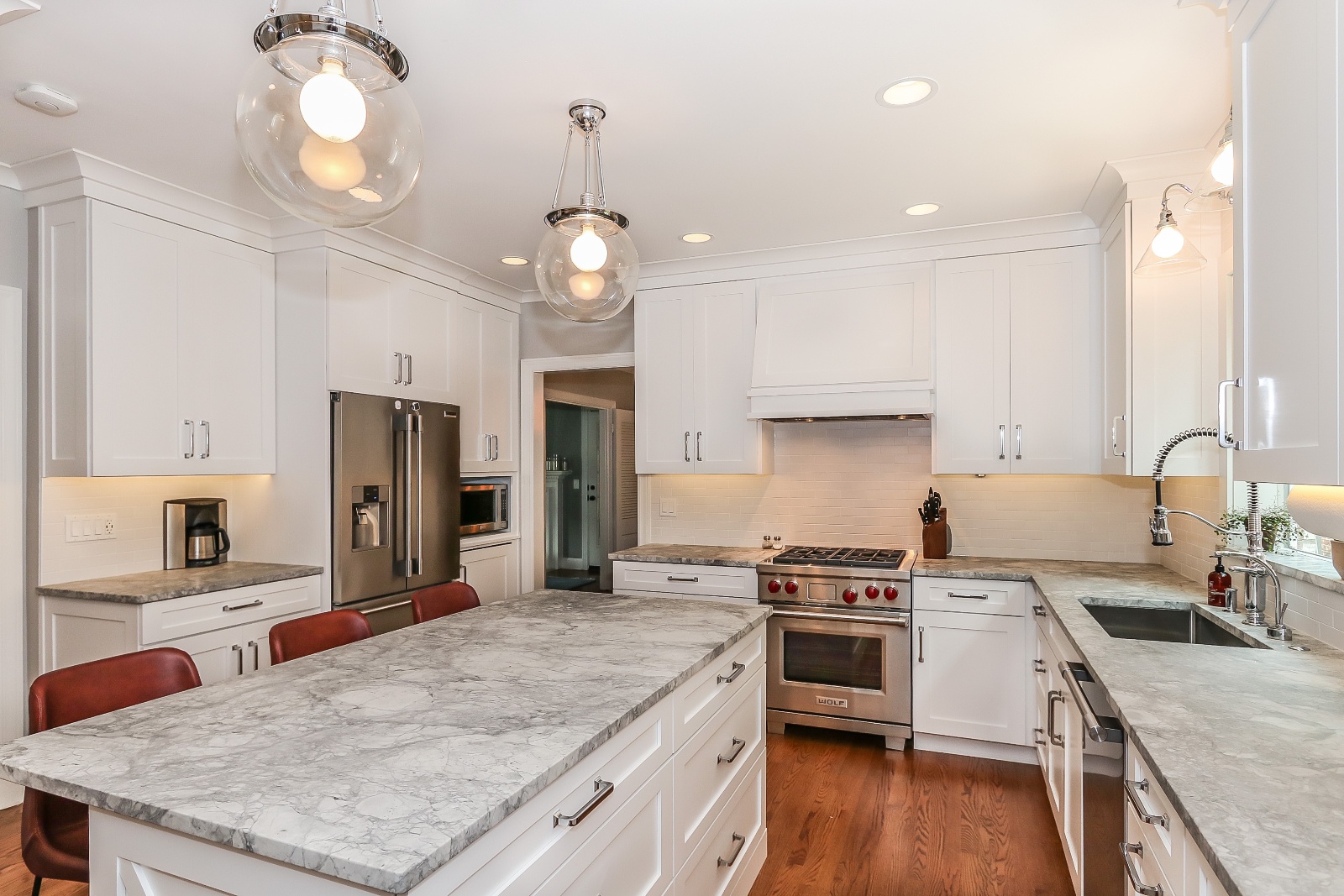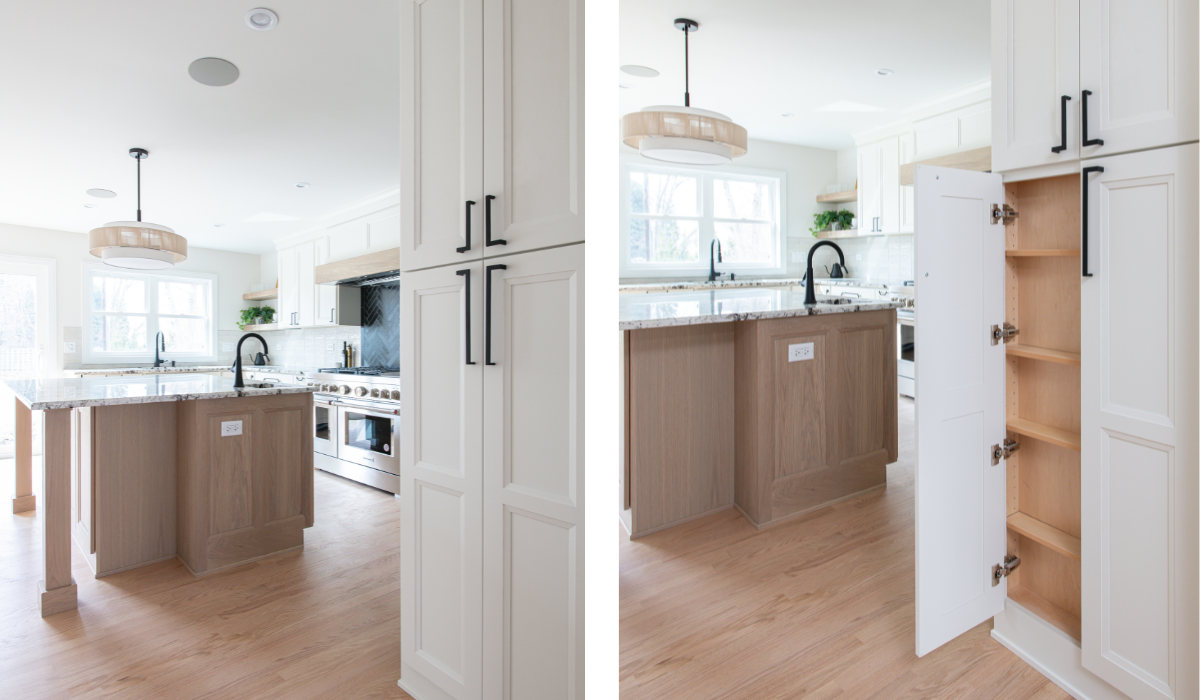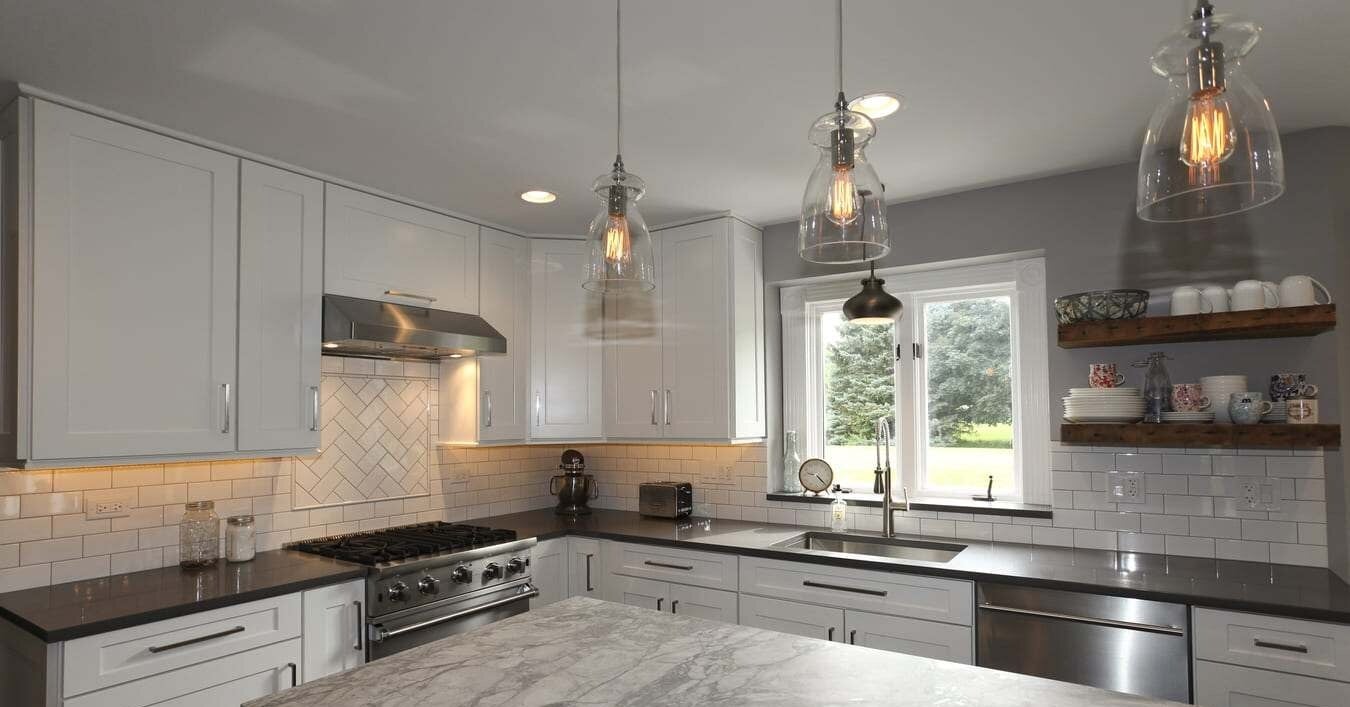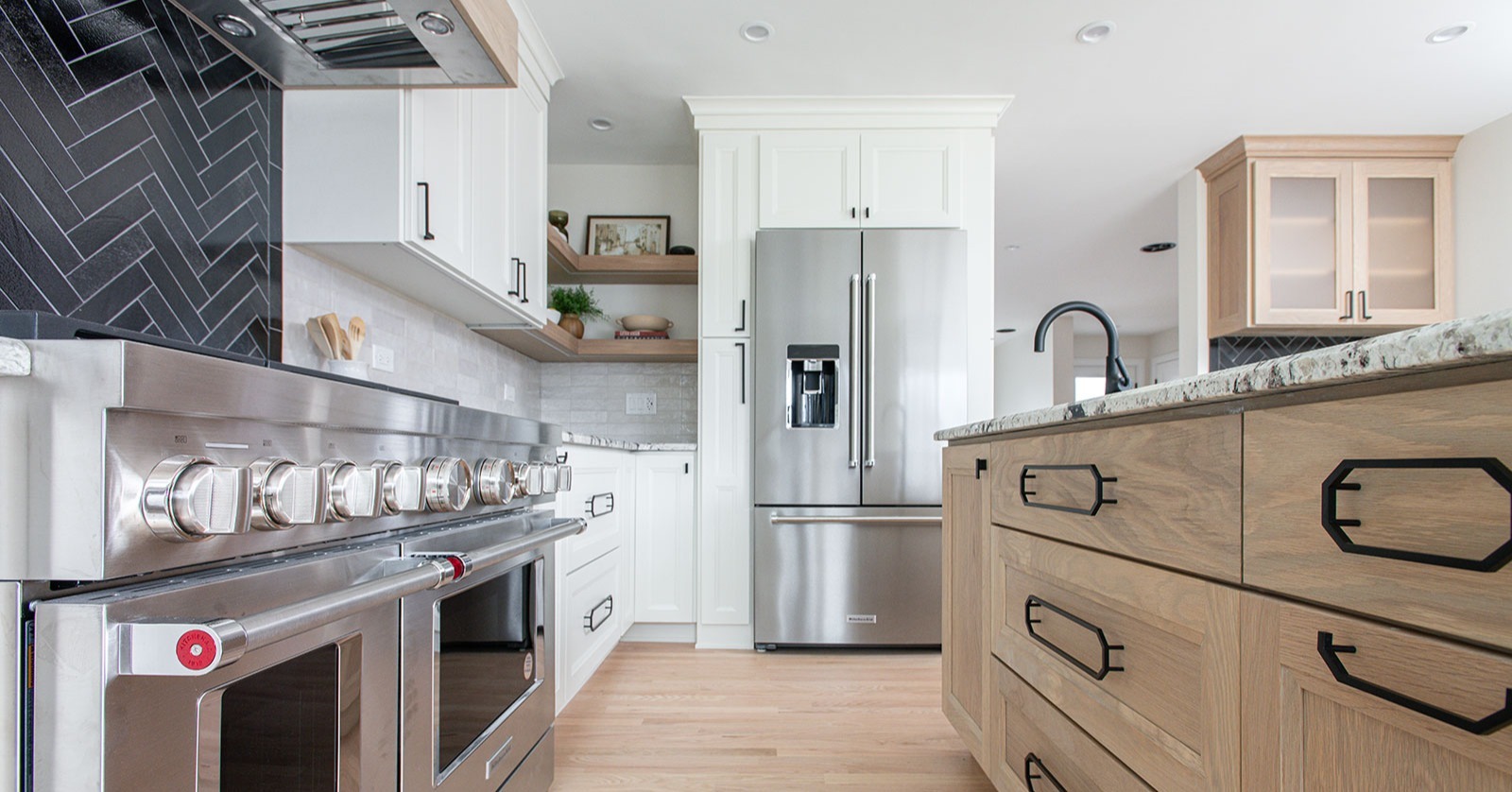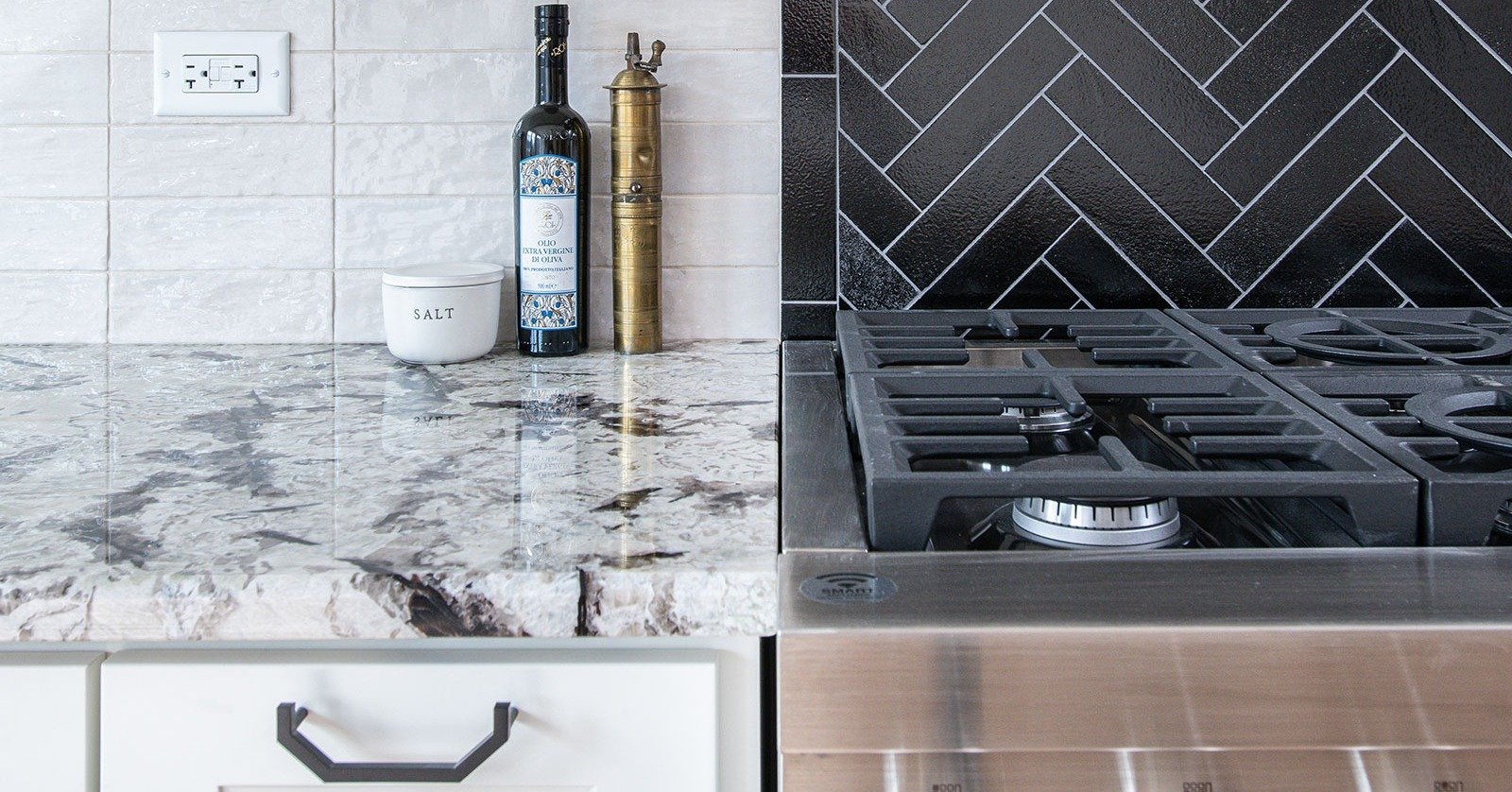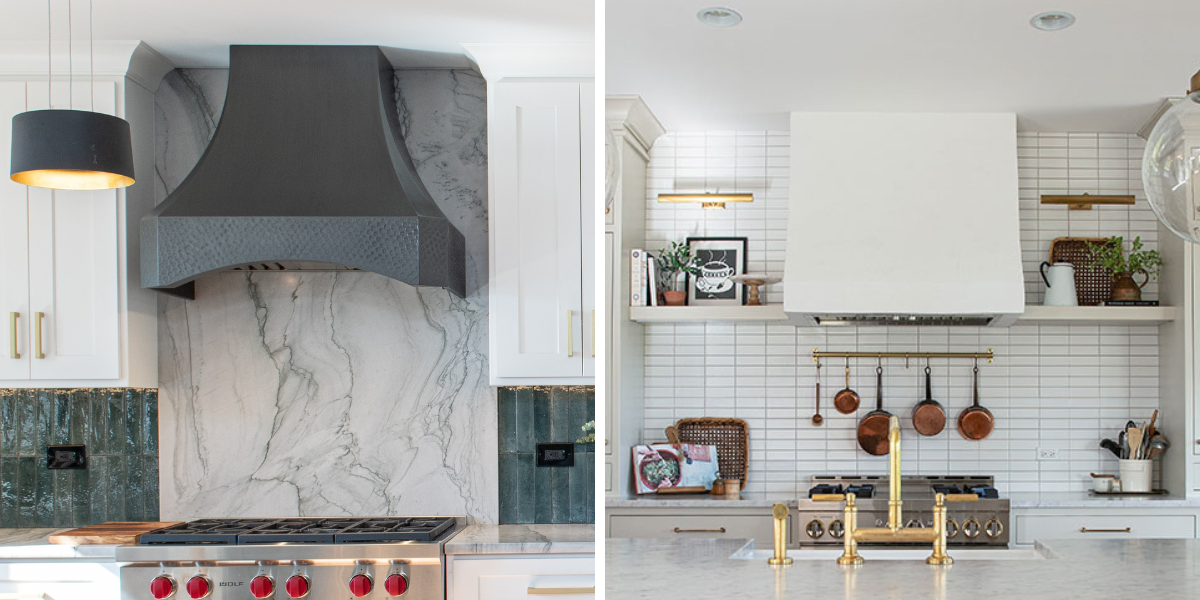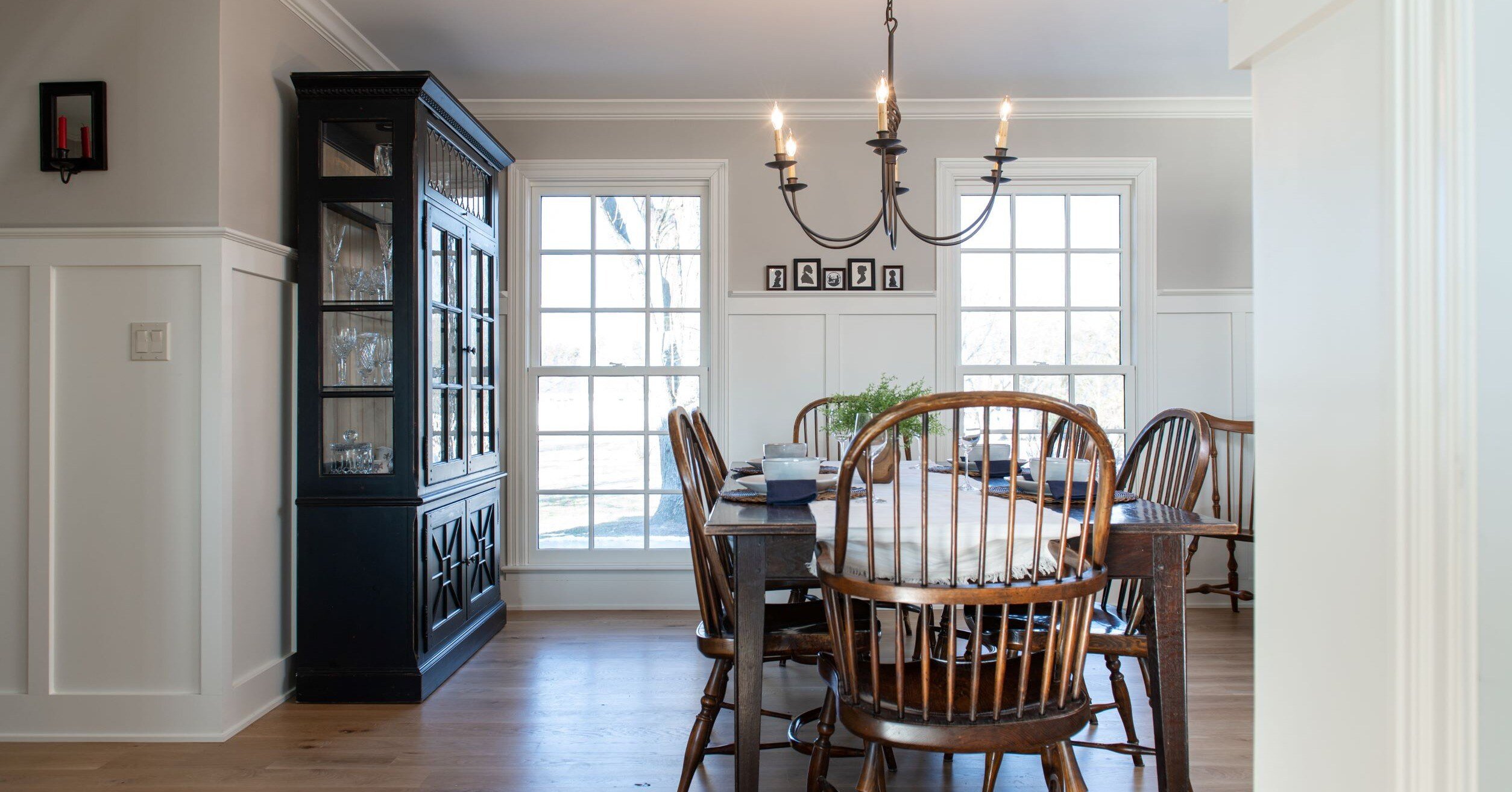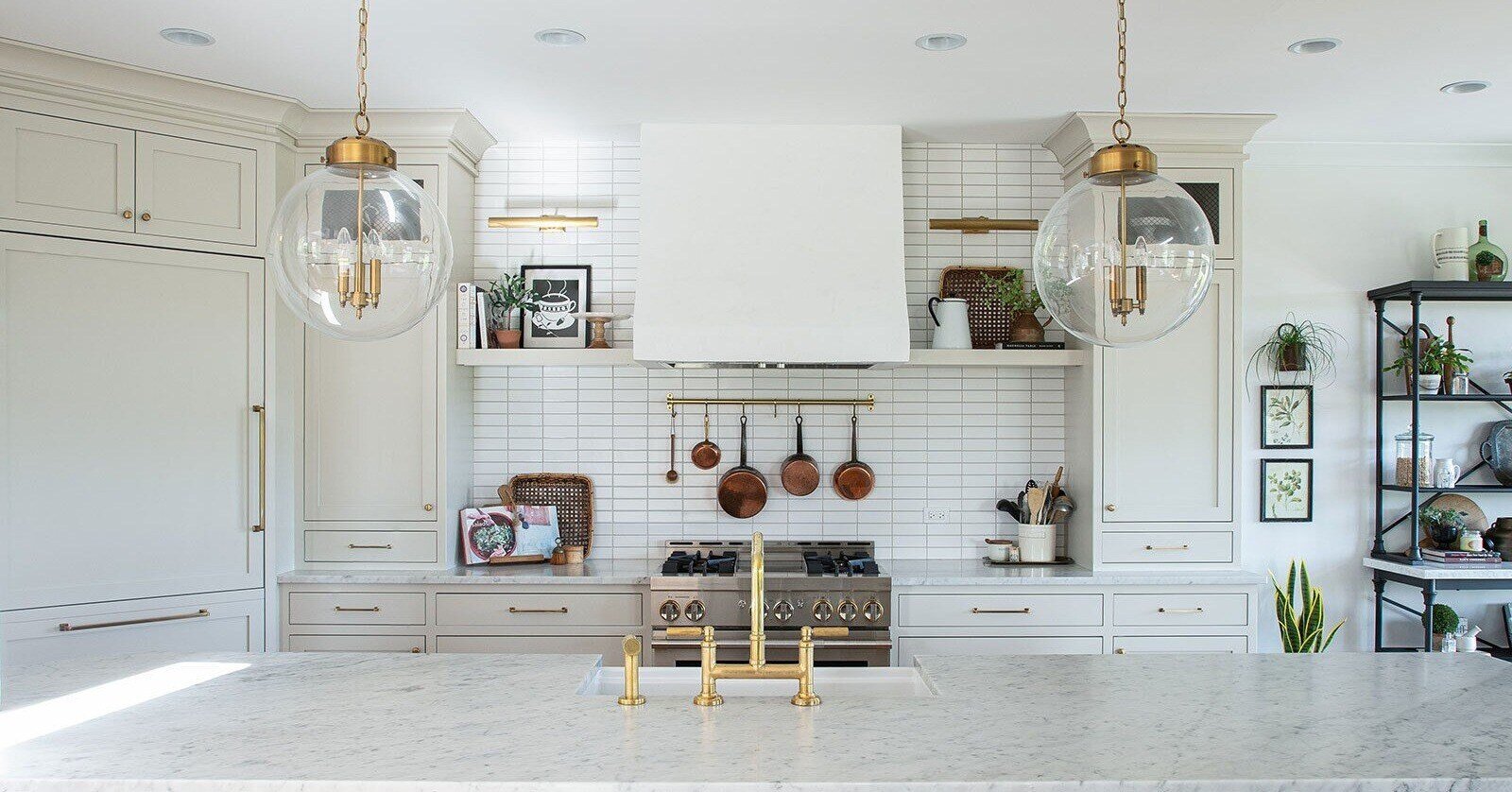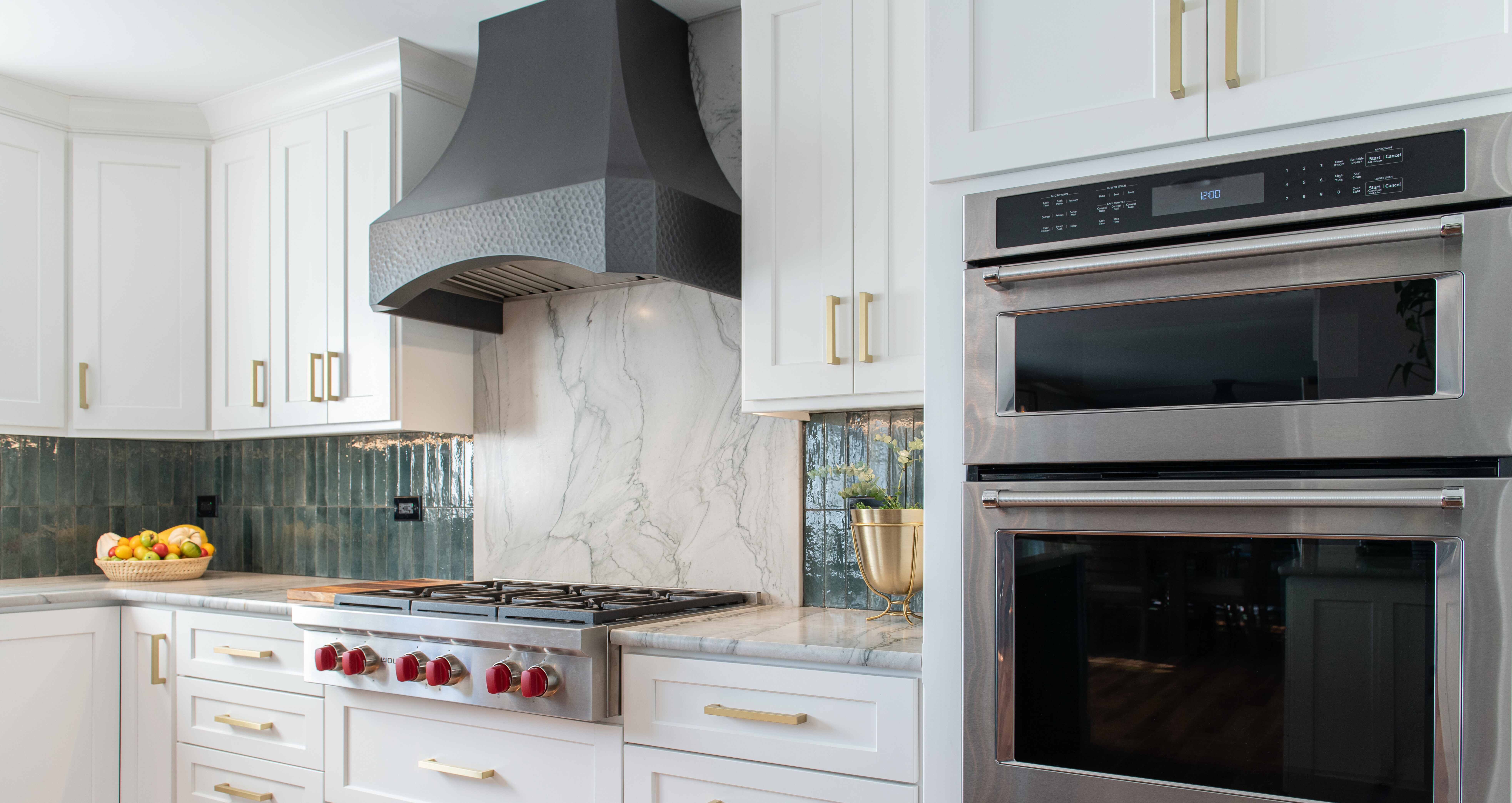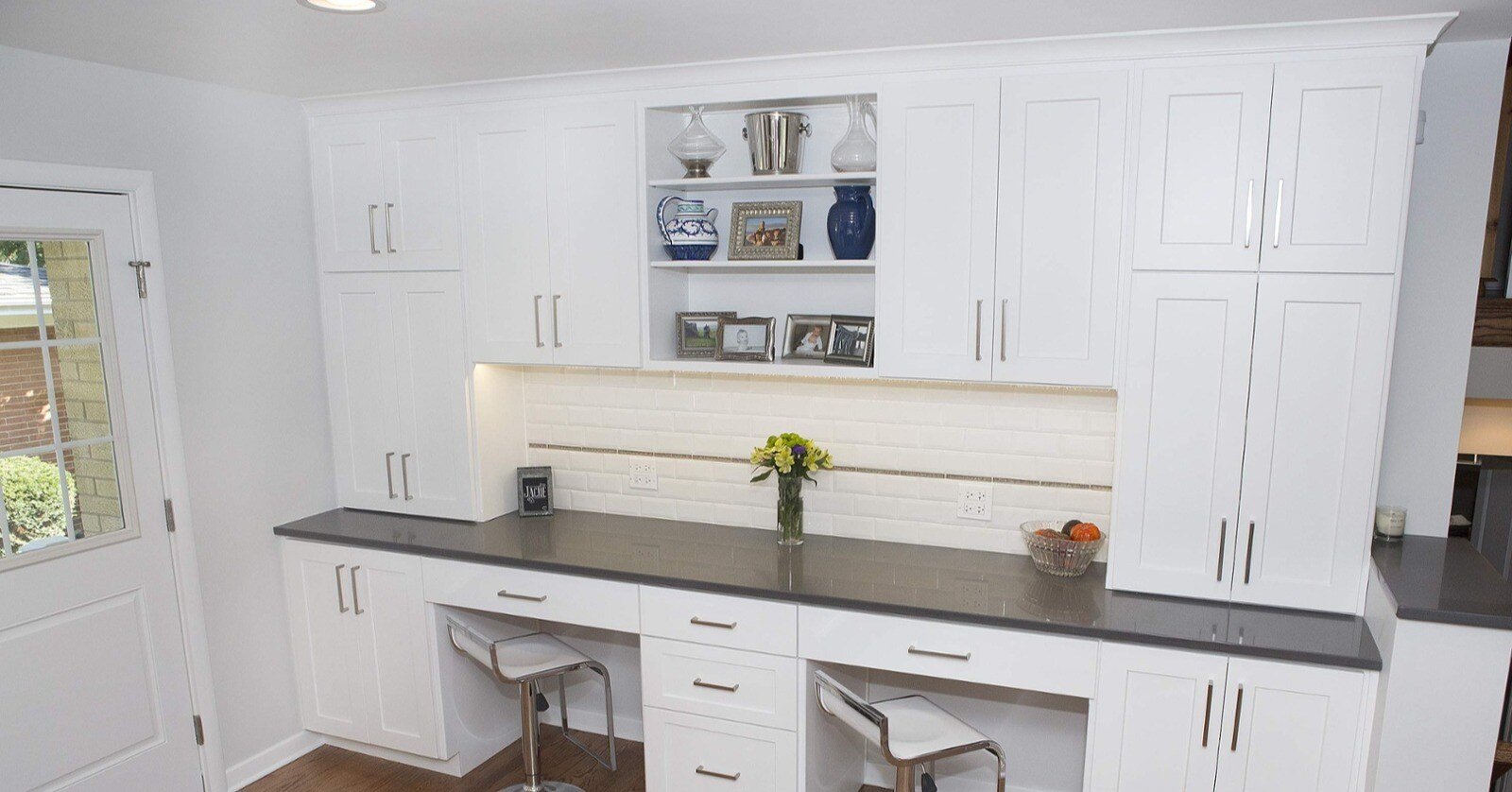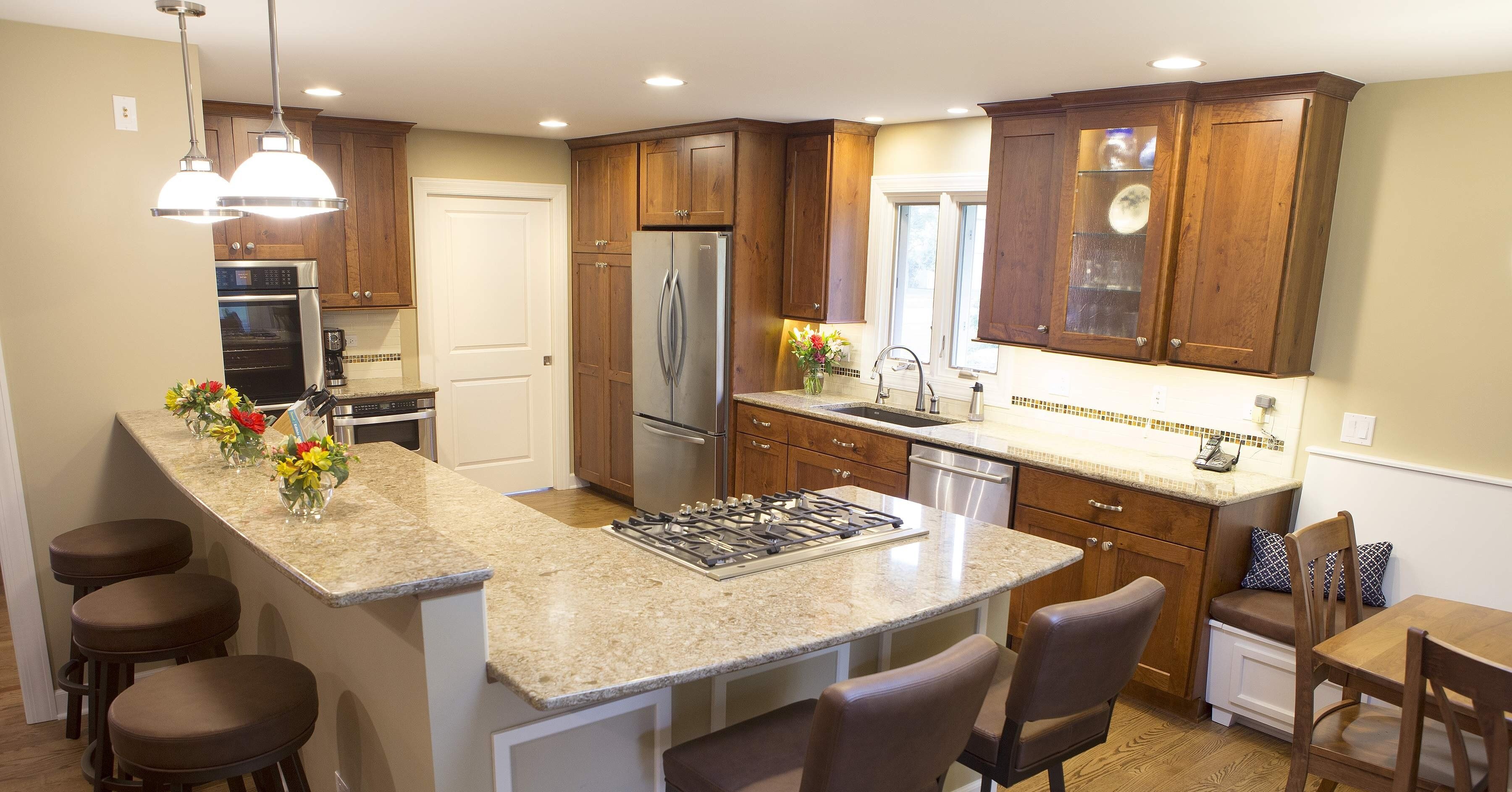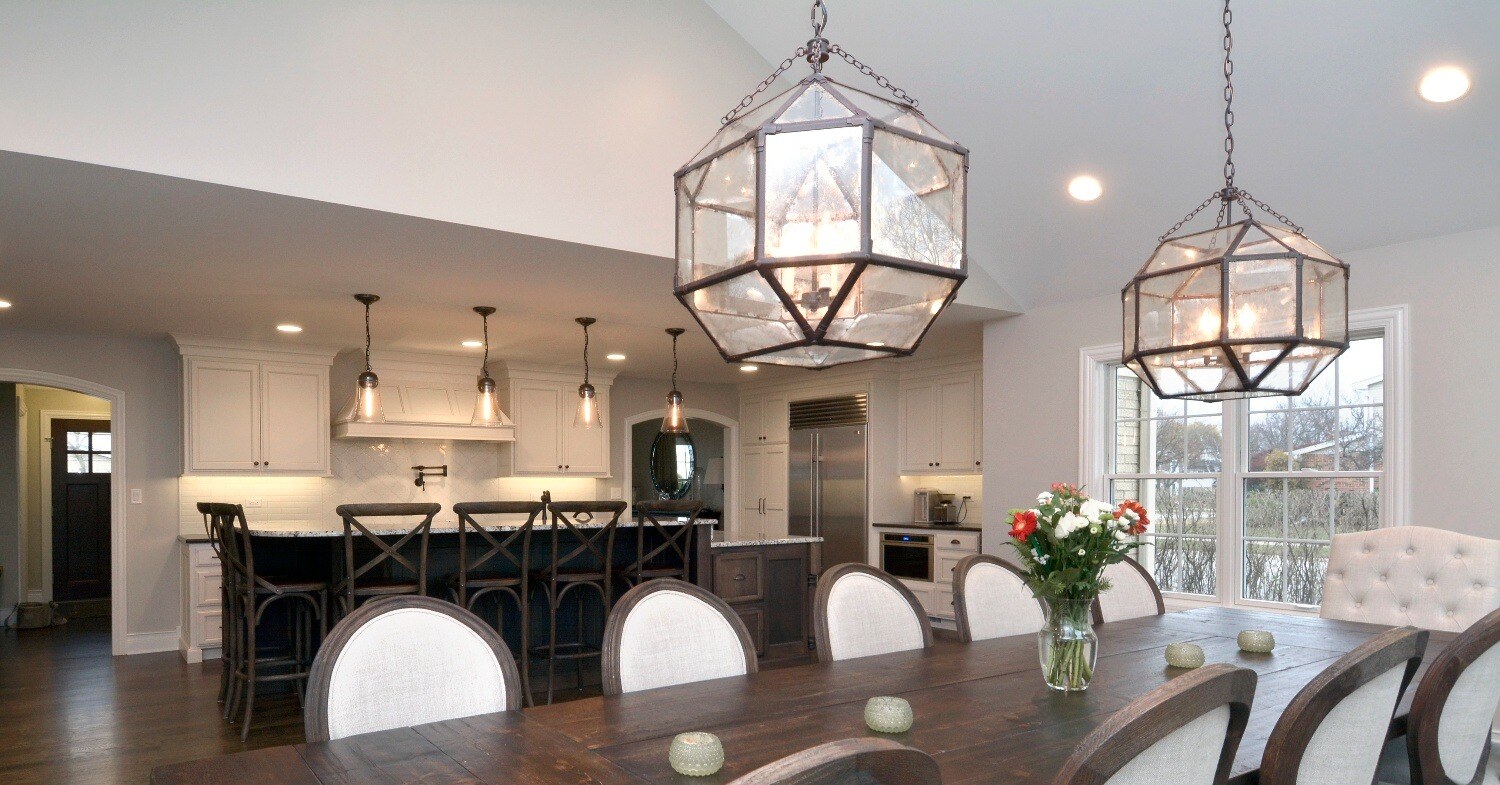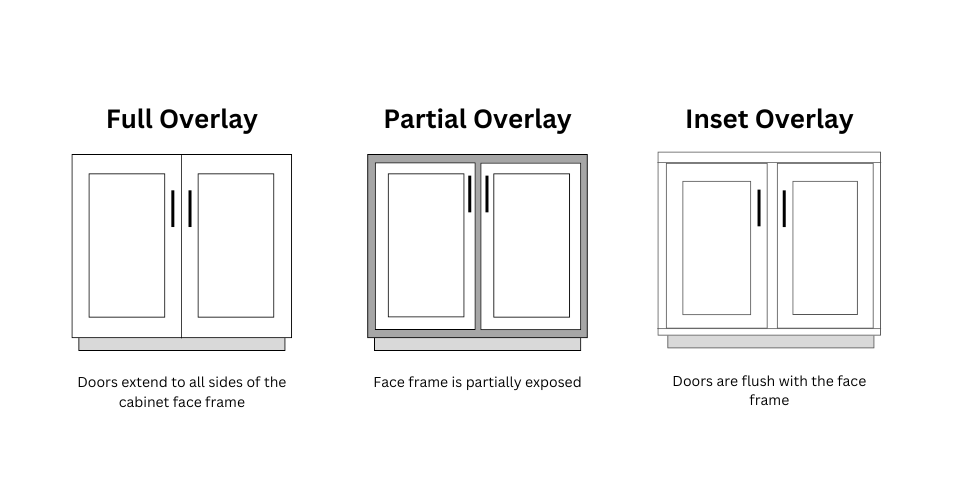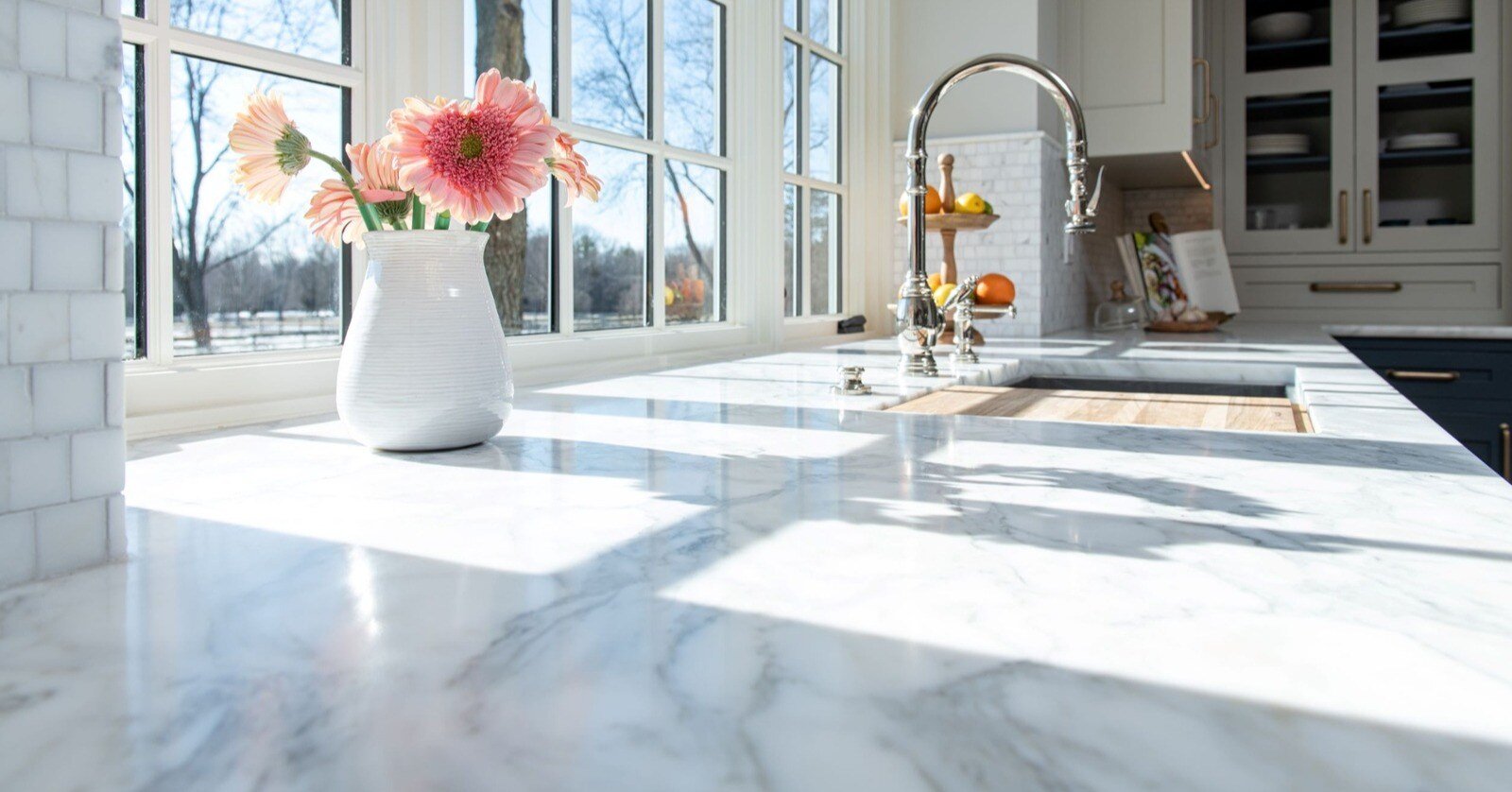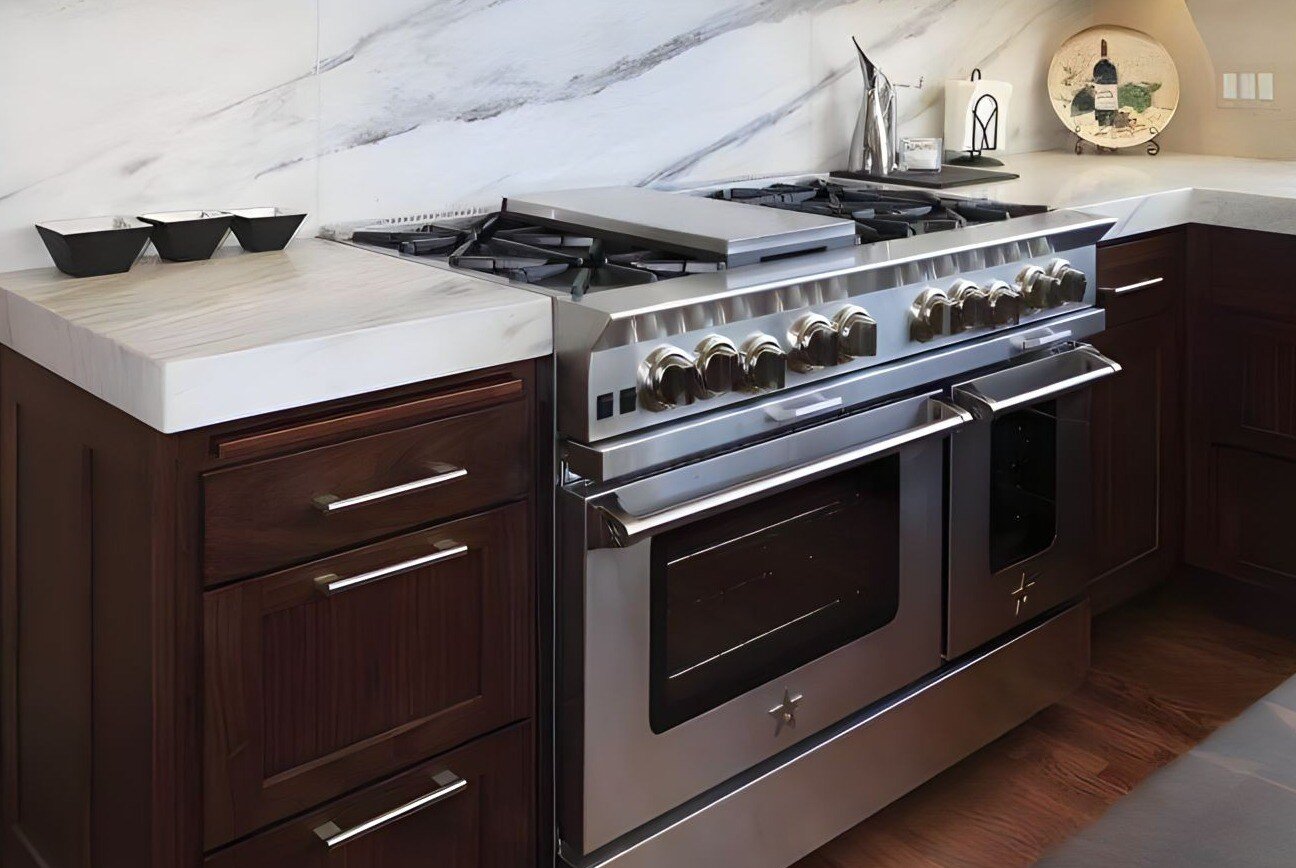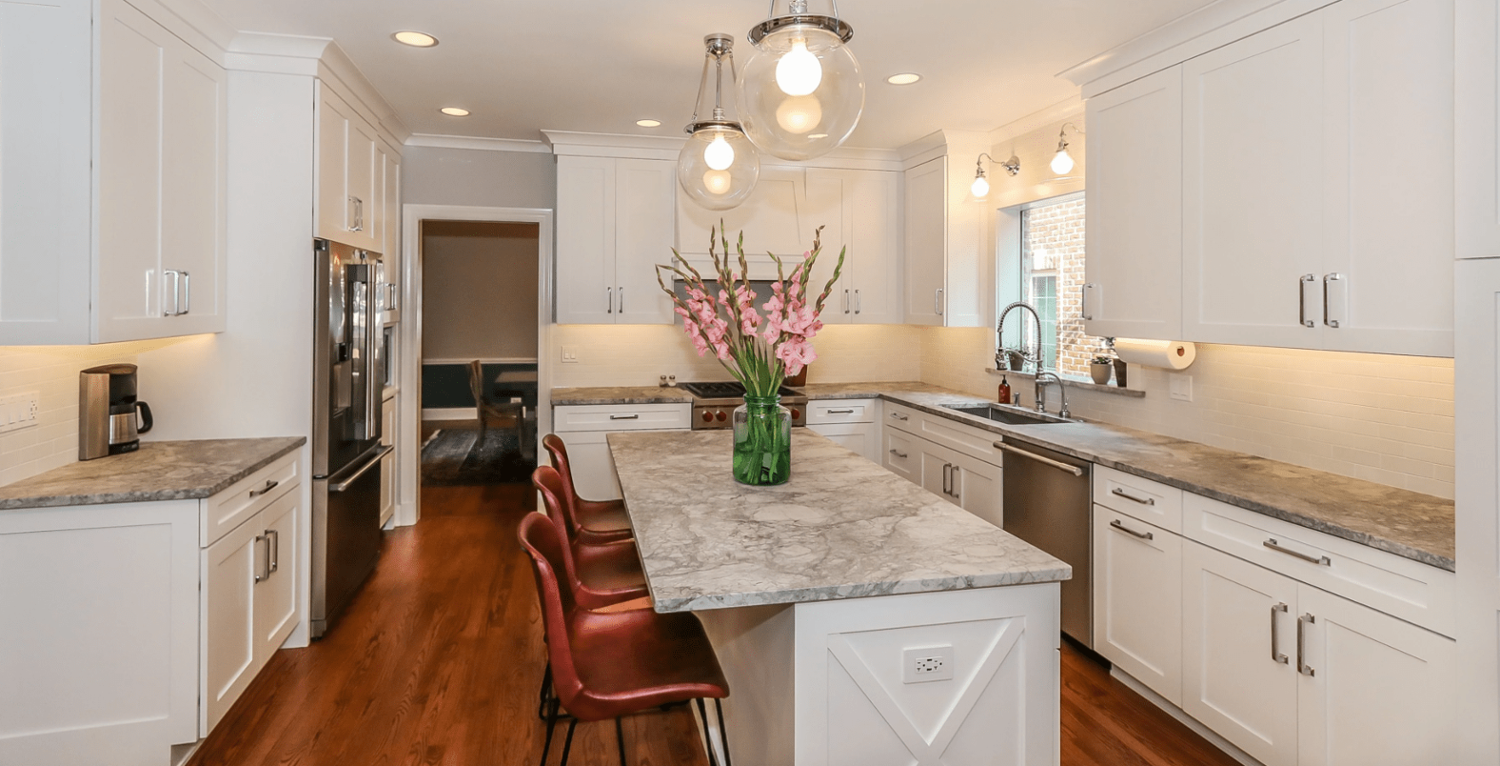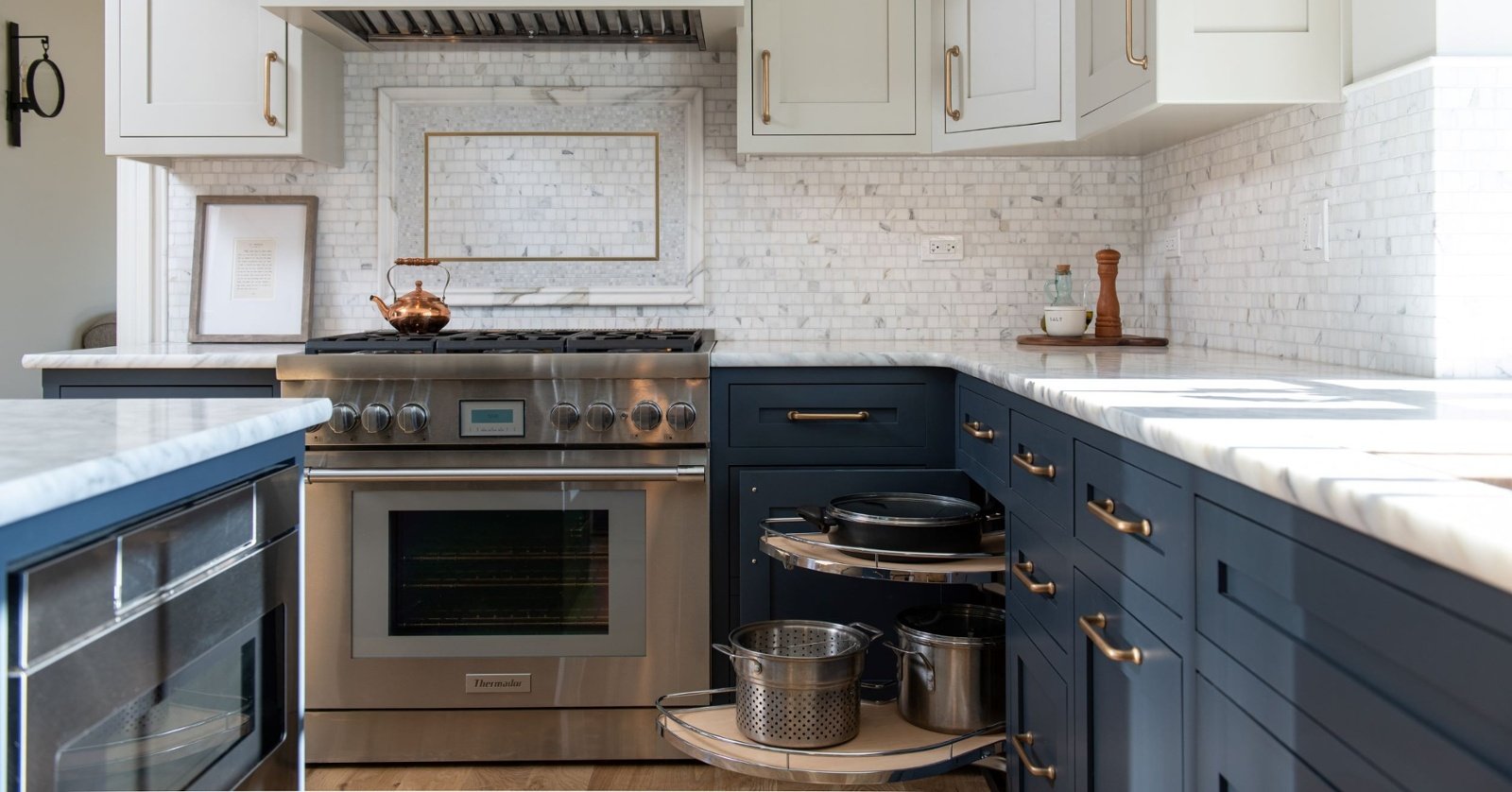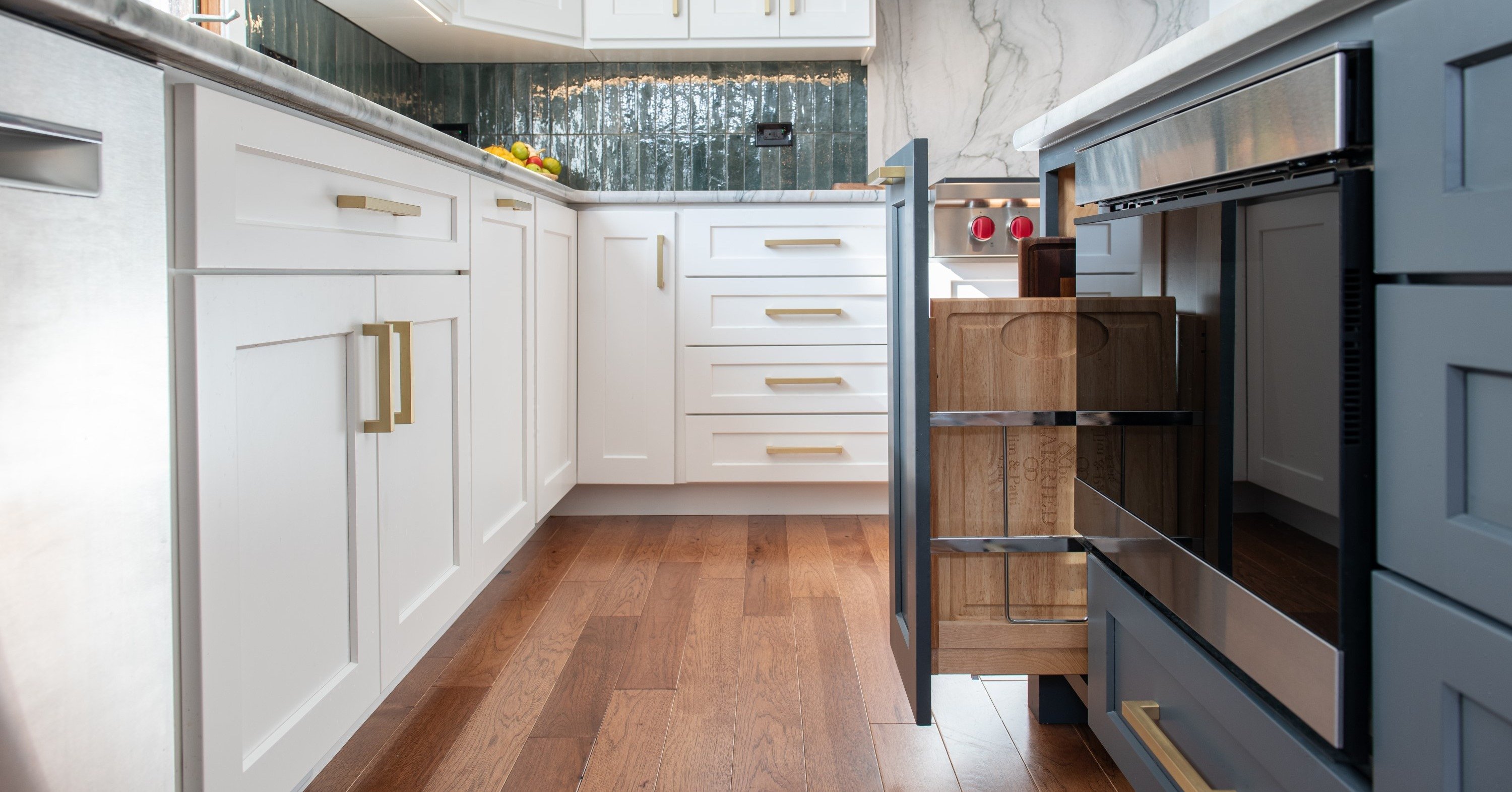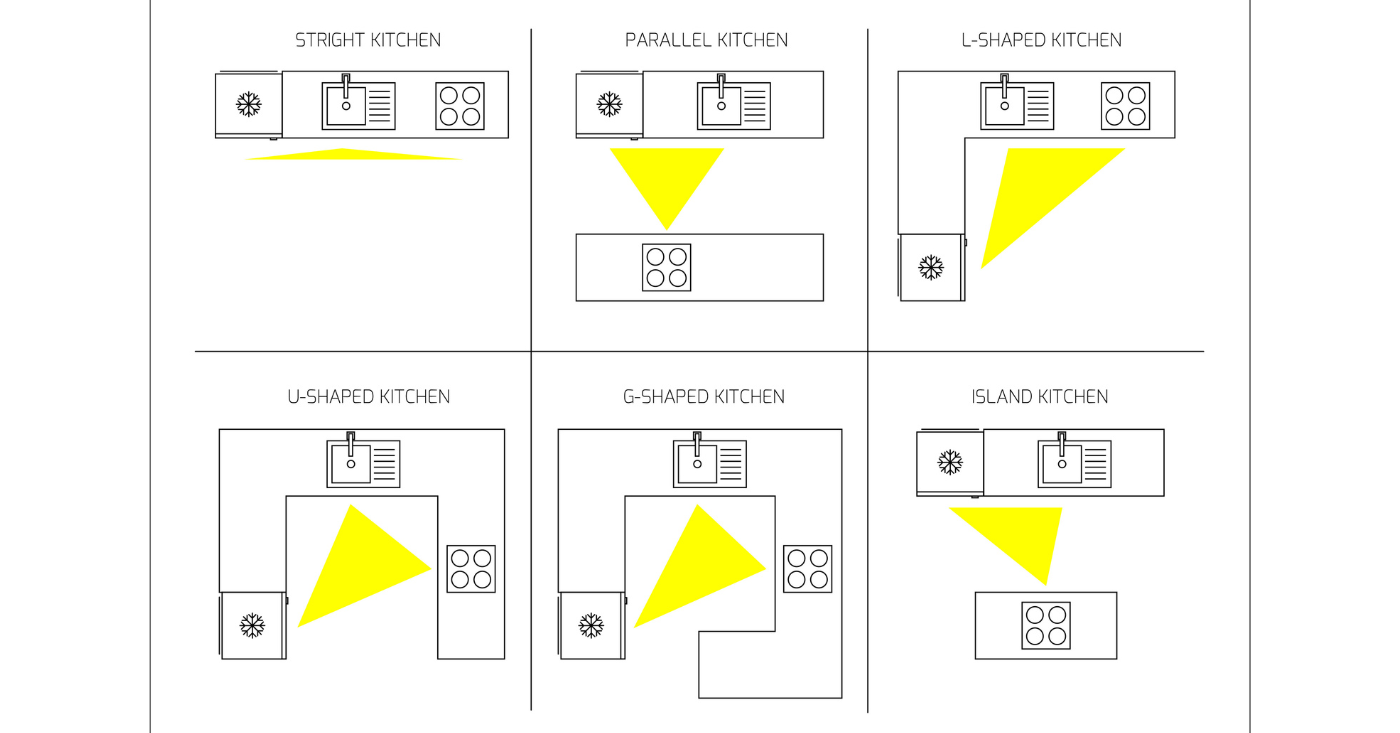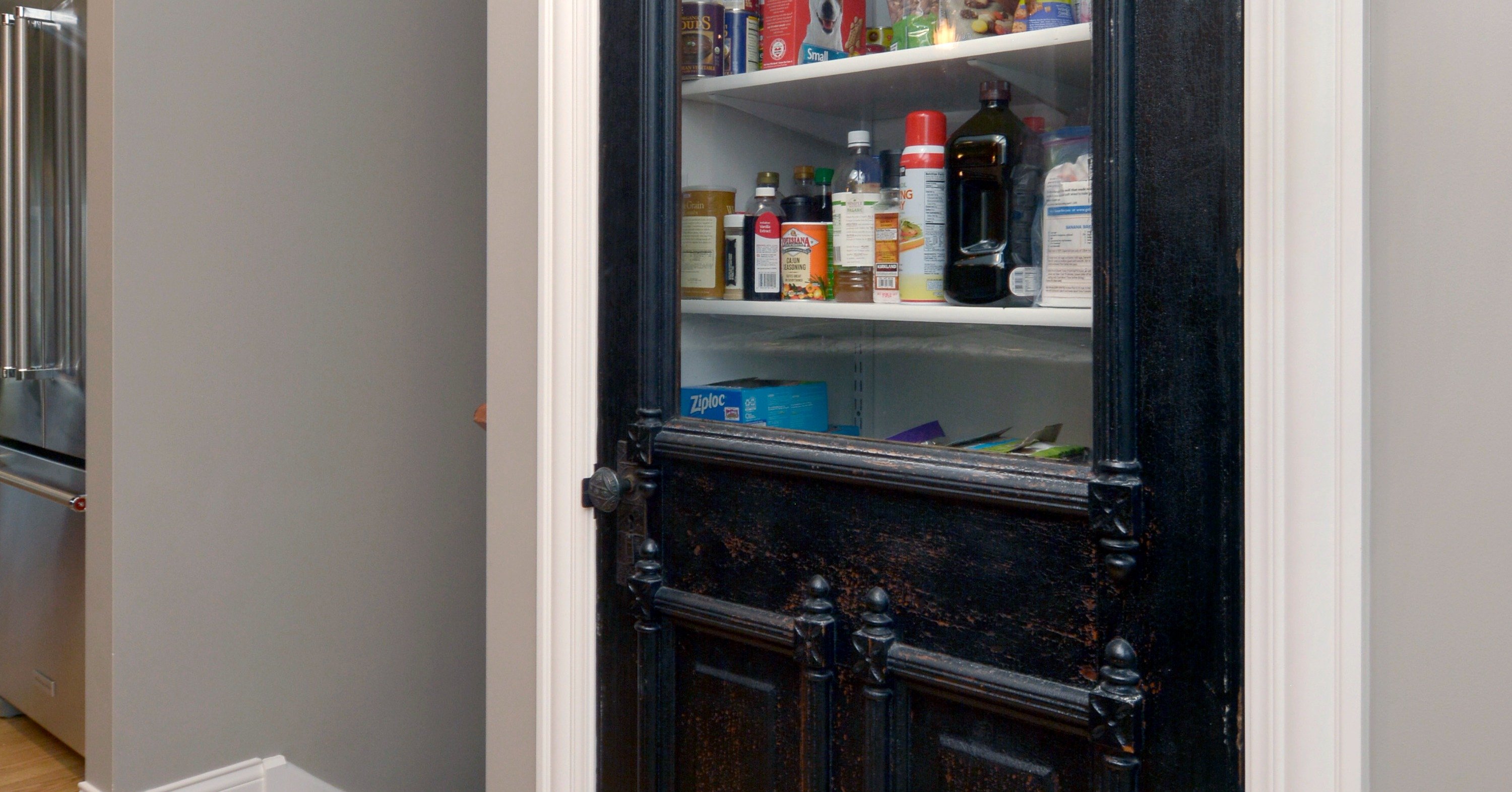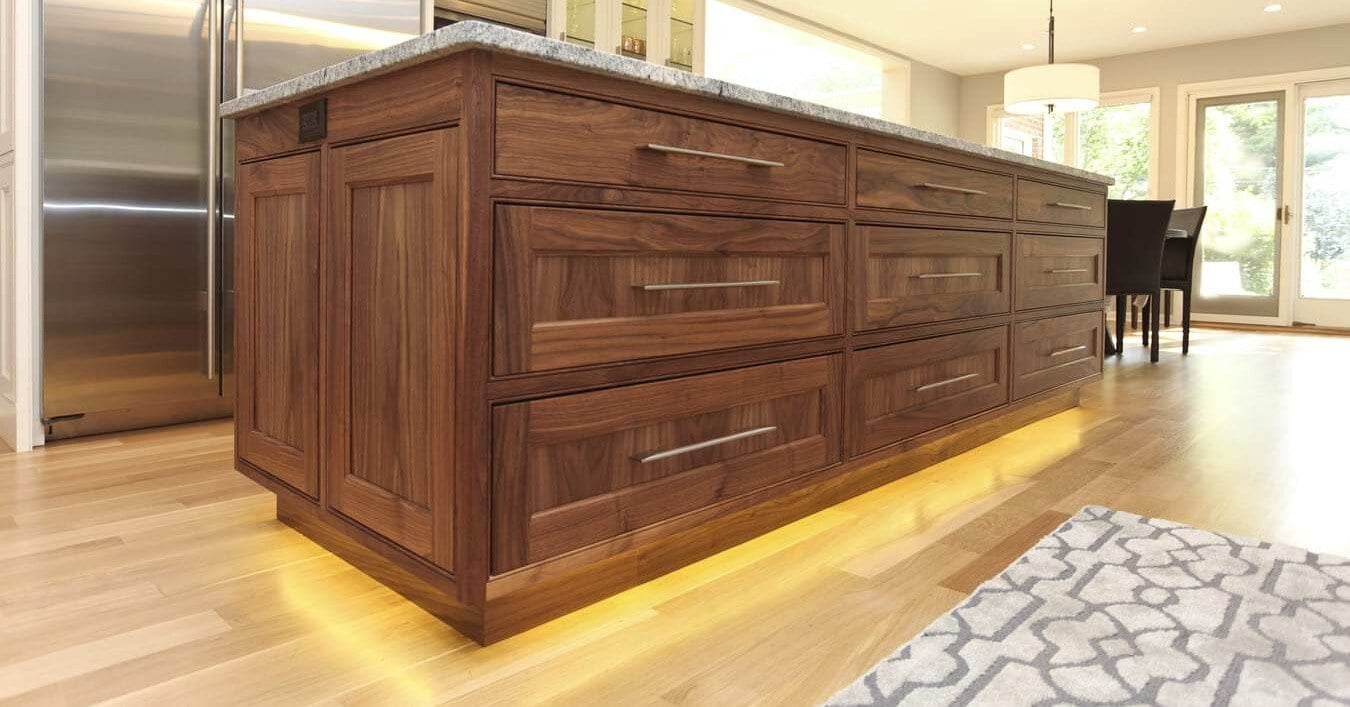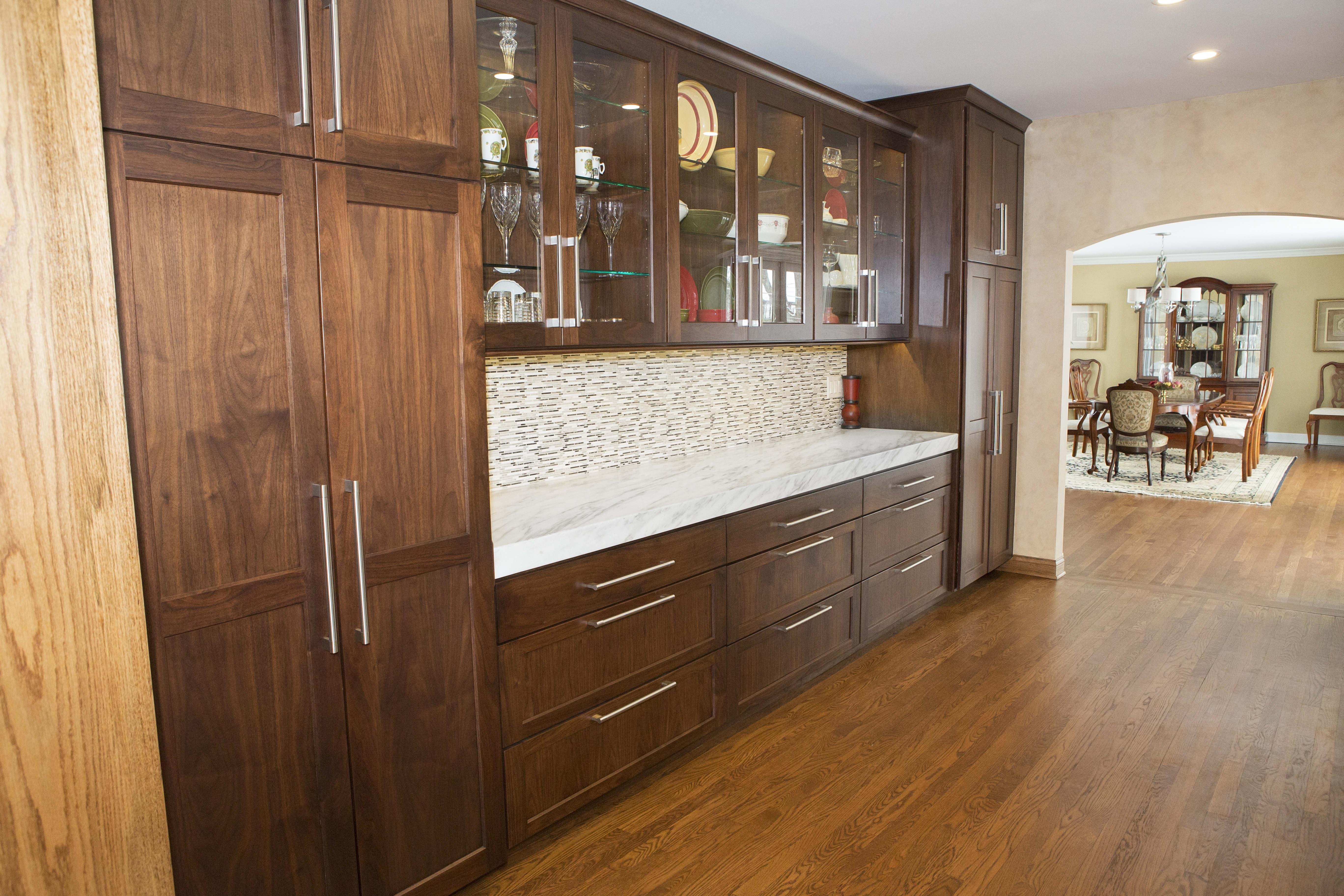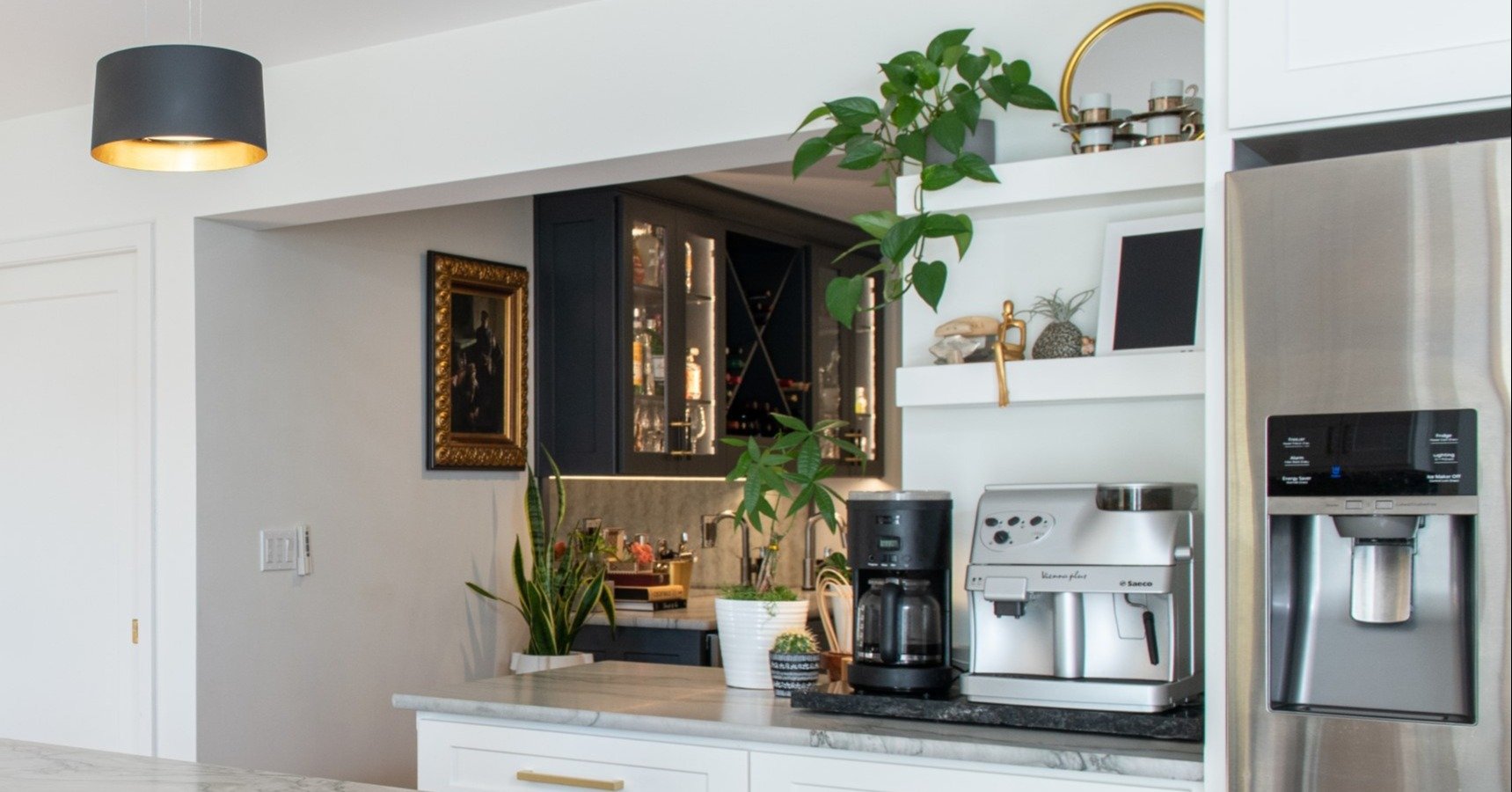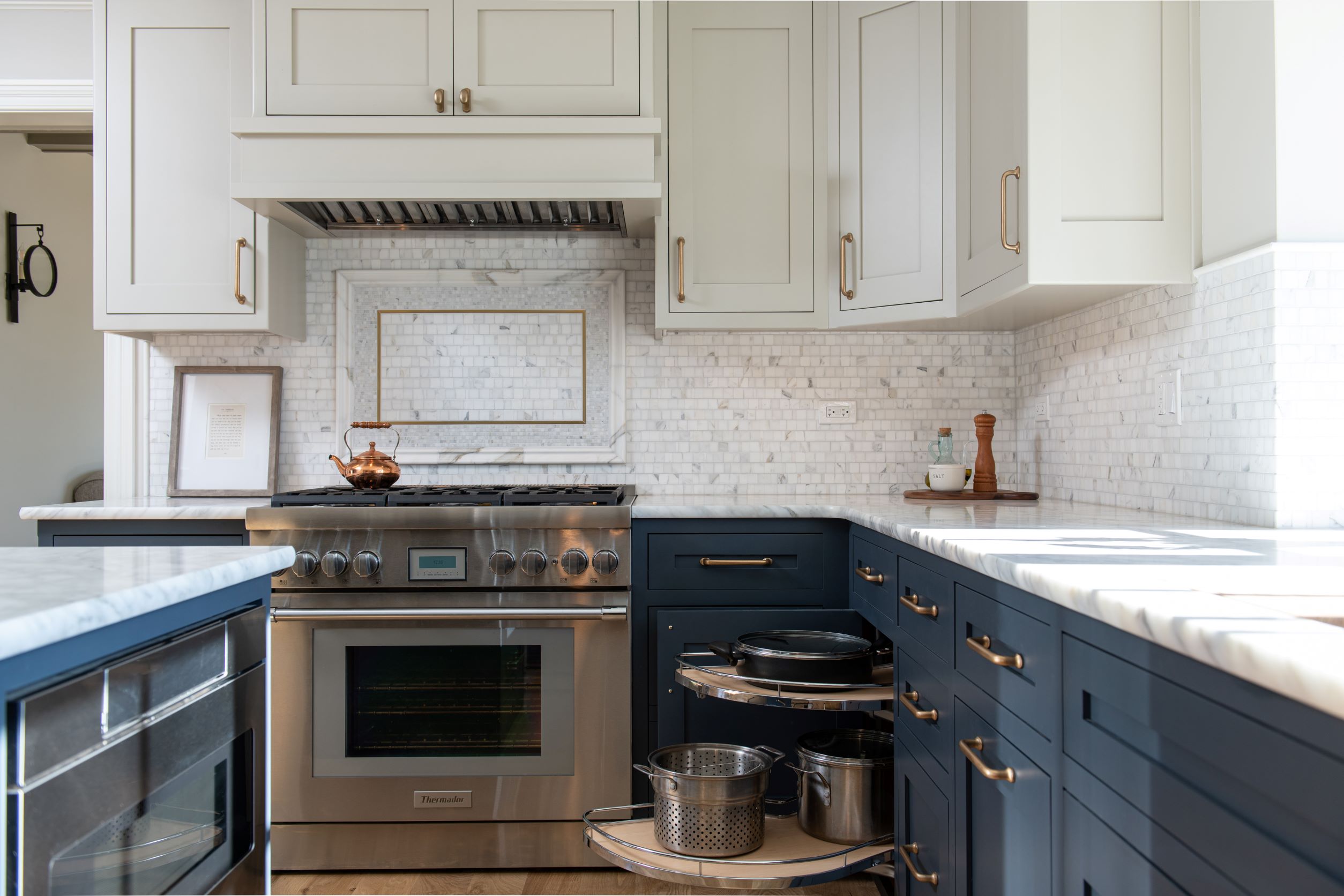Kitchen Lighting Design 101: The Benefits of Natural Light and Proper Lighting Design
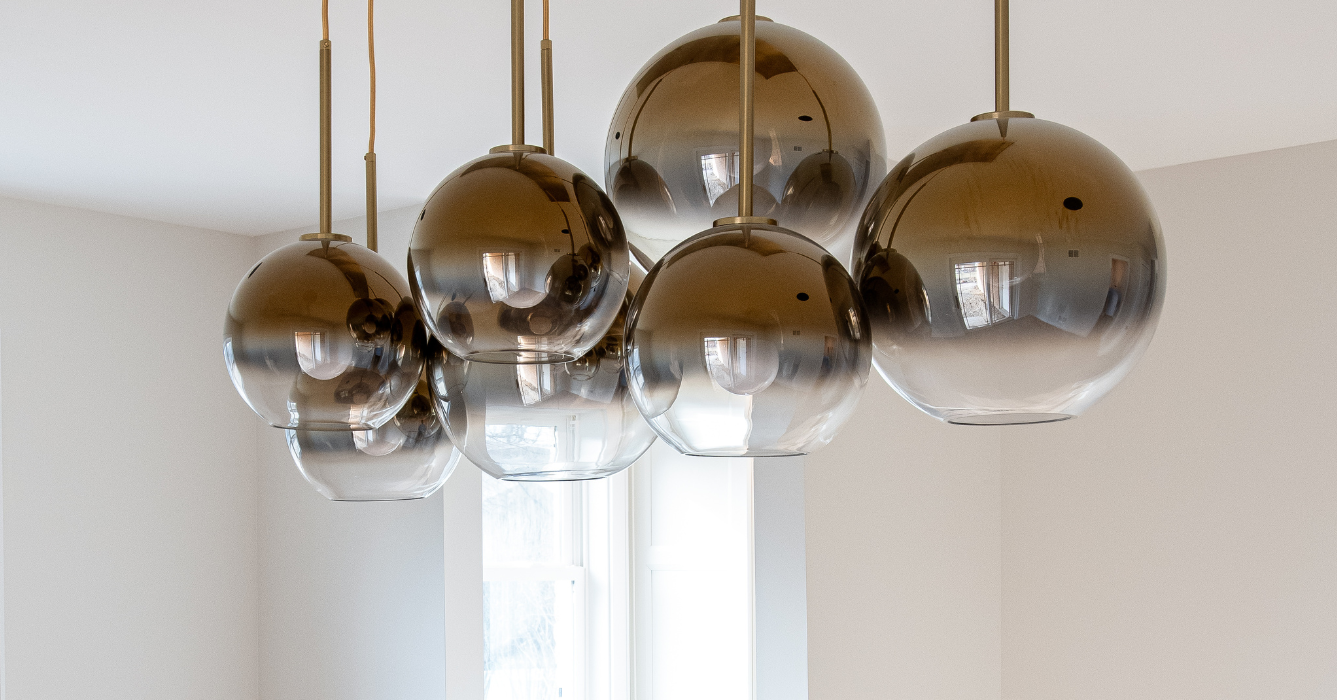
Listen to the Blog Post
The right lighting design is what truly brings your kitchen to life—it’s the difference between a space that feels incomplete or sterile and one that is welcoming and highly functional. More than just illumination, lighting shapes how you experience your kitchen, from the way you safely prepare meals to how the space invites warmth and connection. A well-thought-out lighting plan ensures every corner of your kitchen is purposeful, comfortable, and seamlessly integrated into the overall design of your home.
In this guide, we’ll explore the importance of kitchen lighting, the best lighting types, layering techniques, and how to maximize natural light in your space.
Why Is Lighting Important in the Kitchen?
1. Safety First
Safety should always come first in the kitchen, and the right lighting plays a huge role in keeping things accident-free. Whether chopping vegetables, working over a hot stove, or handling kitchen appliances, having the right amount of light on your work surfaces ensures you can see clearly and work confidently. Poor lighting can lead to slips, spills, and even serious injuries—so, ensuring your kitchen is well-lit isn't just about aesthetics; it's about peace of mind.
2. Proper Food Preparation
Good lighting is the secret ingredient to a well-prepared meal. Whether you're adding the perfect amount of seasoning, checking if your chicken is cooked just right, or making sure your plating looks as appetizing as it tastes, the proper lighting scheme helps you see colors and textures clearly. Without it, you could end up second-guessing your cooking—or worse, serving something undercooked or overdone.
3. Ambiance and Atmosphere
The right lighting can completely transform the vibe of your kitchen. Do you want a bright, energetic space to power through meal prep? Or maybe a softer, cozier glow for relaxed dinners and entertaining? The way you light your kitchen shapes how it feels and functions, making it one of the most important design choices you’ll make.
4. Effective Cleaning
A well-lit kitchen also helps keep your space clean. The right lighting makes it easier to see spills, crumbs, and splatters that might go unnoticed in dim lighting, ensuring your kitchen stays clean, hygienic, and ready for whatever’s next.
What Are the Best Types of Lighting for a Kitchen?
To create a well-lit kitchen, you’ll need a combination of three primary types of lighting: ambient, task, and accent lighting. Each lighting option serves a different purpose and, when layered correctly, provides ample functionality and maximizes the experience of the space.
Ambient Lighting
Ambient lighting, also called diffused lighting, is the foundation of your kitchen’s light source. It provides a soft, even glow that eliminates harsh shadows and makes the space feel open and inviting. This is your general lighting—the kind that keeps the entire kitchen well-lit and functional. Some options for ambient lighting include:
- Recessed ceiling lights
- Track lighting fixtures
- Flush mount lights
Task Lighting
Task lighting is all about functionality—it provides bright, targeted illumination where you need it most. Whether you're slicing vegetables, reading a recipe, or washing dishes, good task lighting ensures you can see clearly and work efficiently. Here are some of the best places to incorporate task lighting:
- Under-cabinet lighting installed on the upper cabinets to brighten countertops
- Pendant lights over the kitchen island to enhance the overall style and function of the space
- Range hood lighting for better visibility while cooking
- Recessed lighting above the kitchen sink

Accent Lighting
Accent lighting adds personality and depth to your kitchen, helping to highlight architectural features and set the overall mood of the space. Accent lighting is what gives your space that polished, high-end feel. Think of it as the finishing touch that elevates your design. Some ways to incorporate accent lighting include:
- Pendant lights over the kitchen island for a stylish focal point
- Wall sconces to add warmth and character
- Toe-kick lighting on lower cabinetry for a subtle, modern glow
- Puck lights or backlighting inside glass cabinet doors to showcase special dishware or glassware
- Picture lights to highlight open shelving and decorative elements
- Recessed lighting strips on floating shelves
- Integrated lighting in the kitchen island for a unique layer of visibility

How to Layer Lighting in a Kitchen
A well-designed kitchen lighting plan incorporates all three lighting types. Consider working with an interior designer to strategically place lighting to complement the design.
1. Define Lighting Zones
Different lighting layers can help create functional zones in your kitchen, such as:
- Food prep areas: Bright task lighting for safety
- Dining areas: Soft ambient lighting for a relaxed atmosphere with dimmers
- Reading nooks or workspaces: Adjustable lighting for clarity and comfort
2. Consider Lighting Heights
Getting the height right for pendant lights, wall lights/sconces, and other fixtures is key to making your kitchen feel balanced and functional. When installed too high, they won’t provide enough light to be effective; when they are too low, they become an obstacle and a possible safety hazard to work around. Following recommended height guidelines ensures optimal illumination without getting in the way.
- Pendant lighting should be positioned 30-36 inches above the countertop.
- Wall sconces are typically placed between 60-72 inches above the floor.
- Picture lights should be proportionate to the shelving they illuminate.
3. Smart Home Lighting Integration
Smart home lighting systems offer convenience and efficiency. You can control your kitchen lighting with voice commands, automated schedules, or home automation systems for a seamless experience.
4. Outlet Placement for Lamps
If you prefer ambient lighting from lamps instead of overhead lighting, ensure your remodel includes enough strategically placed outlets to accommodate this. Consider furniture placement to minimize visible cords and enhance functionality. If you have lamps that will be in the center of the room, find out if you can install floor outlets.
How to Maximize Natural Light in Your Kitchen
Bringing in natural light can make your kitchen feel brighter, more inviting, and even more spacious. If your kitchen feels too dim, there are plenty of ways to maximize the light you have—or add more where it’s needed. Natural light ideas include:
1. Skylights and Solar Tubes
Skylights and sun tunnels (such as VLux Sun Tunnels (also known as solar tubes) can introduce additional daylight into darker kitchens. Options include:
- Operational skylights: Can open to improve ventilation
- Non-operational skylights: Provide light without ventilation
- Integrated blinds for skylights: Allow for automated control of blinds to control the amount of light and privacy
2. Additional Windows
Adding or enlarging windows during your kitchen remodel can significantly increase natural light. Consider:
- Southern-facing windows: Provide warm daylight throughout the day
- Northern-facing windows: Offer a soft, consistent light without harsh glare
- Sliders or French doors: Enhance indoor-outdoor connectivity and maximize light
- Frosted or textured glass doors: Provide privacy while allowing ample light
Kitchen Lighting Ideas & Trends
Modern kitchen design trends focus on personalization and creating a space that reflects your unique aesthetic. Because of this, kitchen lighting is no longer just about illumination—it’s becoming a statement piece that enhances this personal style and provides functionality. Some of the latest lighting trends include:
1. Bringing in More Natural Light
With Illinois’ long winters and limited daylight, many homeowners are investing in skylights and solar tubes to bring in natural light year-round.
2. Experiential Lighting
Homeowners are using lighting to create immersive experiences. This includes:
- Toe-kick motion-activated lighting for nighttime navigation
- Motion-activated pantry and closet lighting
- Under-shelf and over-shelf lighting for added drama and depth
3. Statement Lighting
Lighting is no longer an afterthought—it’s a focal point of kitchen design. Homeowners are choosing statement fixtures to reinforce their desired aesthetic, such as:
- Mid-century modern chandeliers
- Farmhouse-style pendant lights
- Sleek, modern LED strips
The Importance of Planning Your Kitchen Lighting Early
Lighting is the finishing touch that brings your kitchen design to life, but it requires early planning. Here’s why:
- Electrical and framing rough-ins: Certain fixtures require backing or specific wiring placements that must be completed before drywall installation.
- Height and depth considerations: If lighting isn’t selected in advance, electricians may install rough openings at incorrect heights.
- Material selection under proper lighting: When choosing countertops, backsplash, and paint, be mindful that showroom lighting can distort colors. Always bring samples home to see how they look in your own space.
Work with the Right Design-Build Team
The right design-build team will help you navigate these considerations to ensure a seamless and functional kitchen lighting plan. At Patrick A. Finn, we take a holistic approach to kitchen renovations, ensuring that every detail—including lighting—is thoughtfully planned from the start.
Read the eBook "Elevate Your Everyday: The Kitchen Remodel Guide for Style and Function" to begin planning how you will illuminate your dream kitchen.




